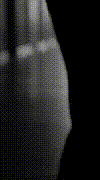Staccato
Registered User
- Joined
- May 28, 2013
- Messages
- 17
- Points
- 0
Hello all,
I was pondering the logistics of a story that I am going to create (with myself not being too familiar with the mechanics of a "good" tickle story) and I came across the dilemma of characterization. I'm having a bit of trouble crafting the visual aspect of my story. More specifically, the image of the characters.
I've noticed that strewn throughout the story section, the descriptions of characters generally seem filled with sexual flair: girls have big tits, nice figures, and are overly-sexualized. Is this necessary for a tickle story to be necessarily "good"?
Do you guys have any tips on how to work on the characterization of a character? Both physical and in terms of personality?
I was pondering the logistics of a story that I am going to create (with myself not being too familiar with the mechanics of a "good" tickle story) and I came across the dilemma of characterization. I'm having a bit of trouble crafting the visual aspect of my story. More specifically, the image of the characters.
I've noticed that strewn throughout the story section, the descriptions of characters generally seem filled with sexual flair: girls have big tits, nice figures, and are overly-sexualized. Is this necessary for a tickle story to be necessarily "good"?
Do you guys have any tips on how to work on the characterization of a character? Both physical and in terms of personality?





